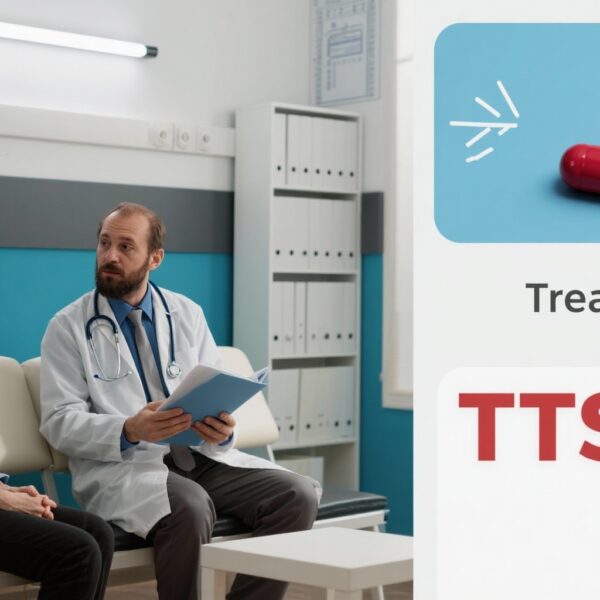Highlight
– Noncocaine psychostimulant use disorder diagnoses among young adult Medicaid enrollees increased substantially from 2001 to 2020.
– Cocaine use disorder diagnoses remained stable or declined in adolescents but did not significantly change in young adults.
– Stimulant use disorder is more common among individuals with diagnosed ADHD or those prescribed stimulants.
– The majority of patients diagnosed with stimulant use disorder also present with co-occurring mental health conditions and other substance use disorders.
Study Background
Stimulant use disorder (UD) presents a significant public health concern in the United States, exacerbated by a national rise in both fatal and nonfatal overdoses involving stimulants. An estimated 4.5 million individuals meet criteria for stimulant UD, with the highest prevalence noted among young adults. Despite this, there exists limited data on trends in stimulant UD diagnoses, particularly within publicly insured populations such as those covered by Medicaid. Understanding temporal trends in stimulant UD diagnosis and their demographic and clinical correlates is essential for informing prevention and treatment strategies.
Study Design
This repeated cross-sectional study analyzed administrative healthcare claims data from Medicaid enrollees across 42 US states over a 20-year period (2001-2020). The population included adolescents aged 13-17 years and young adults categorized into two subgroups: 18-24 years and 25-29 years. Stimulant UD was identified via inpatient or outpatient International Classification of Diseases diagnostic codes for cocaine UD and noncocaine psychostimulant UD separately. Annual proportions diagnosed were stratified by age group, sex, race/ethnicity, and the presence of diagnosis or treatment related to attention-deficit/hyperactivity disorder (ADHD). Data analysis was conducted between January and July 2025.
Key Findings
The study encompassed 5.7 million Medicaid enrollees in 2001, increasing to 16.1 million in 2020 annually. In 2020, females represented 54.2% of the sample, with 7.1 million adolescents included.
– Noncocaine Psychostimulant UD: There was a marked increase in diagnoses of noncocaine psychostimulant UD among young adults. Specifically, the 18-24-year age group showed an increase from 0.09% in 2001 to 0.49% in 2020 (prevalence ratio [PR] 5.47, 95% CI 5.20-5.75). The 25-29-year age group experienced an even larger relative increase from 0.13% to 1.63% (PR 12.55, 95% CI 11.83-13.31). Combining these groups, young adults aged 18-29 had an increase from 0.10% to 0.91%.
Adolescents showed comparatively low and relatively stable proportions, ranging between 0.03% and 0.07%.
– Cocaine UD: Diagnoses of cocaine UD were stable in young adults (18-24 years: 0.17%-0.34%; 25-29 years: 0.53%-0.79%) over the study period but declined in adolescents from 0.04% to 0.01%.
– ADHD and Stimulant Prescription Impact: Individuals with an ADHD diagnosis or those who received a stimulant prescription were two to four times more likely to have stimulant UD diagnoses, indicating a possible interaction between clinical treatment and risk of UD.
– Co-occurring Disorders: Most individuals diagnosed with stimulant UD in 2020 also had a concurrent mental health disorder (68%-82%) and other substance use disorders (72%-78%), underscoring the complexity of clinical presentations.
Clinical and Demographic Patterns
Although sex and racial/ethnic details were stratified, the primary results emphasize increased prevalence across the young adult age strata regardless of these factors. The association with ADHD diagnosis and stimulant prescriptions suggests that clinical treatment contexts may influence identification or risk of stimulant UD.
Expert Commentary
This comprehensive, longitudinal study offers robust evidence of escalating stimulant UD diagnoses, particularly for noncocaine psychostimulants in young adult Medicaid enrollees. The findings align with public health surveillance reports indicating increased use of prescription and illicit stimulants nationally. The stable rates of cocaine UD in young adults, contrasted with increasing noncocaine psychostimulant diagnoses, may reflect shifts in drug availability, use patterns, and clinician recognition.
The strong link between ADHD diagnosis, stimulant prescription, and stimulant UD diagnosis warrants careful clinical consideration. While stimulants remain first-line treatments for ADHD, these data underscore the need for vigilant screening and monitoring for misuse and dependence in this population.
Clinicians should also be aware of the high prevalence of psychiatric comorbidities and polysubstance use in patients with stimulant UD, making integrated mental health and addiction treatment essential. The lack of FDA-approved pharmacotherapies for stimulant UD emphasizes the need for evidence-based behavioral interventions and novel therapeutic research.
Limitations include reliance on administrative diagnostic codes, which may underestimate true prevalence due to underdiagnosis or coding practices, and potential confounding by changing healthcare access over time. Additionally, Medicaid populations may not generalize to privately insured or uninsured groups.
Conclusion
Over two decades, the diagnosis of noncocaine psychostimulant use disorder has markedly increased among young adult Medicaid enrollees, paralleling national trends in stimulant use and overdose. These findings highlight an urgent need for enhanced clinical screening, prevention strategies, and development of evidence-based treatments targeting young populations. Coordinated management addressing co-occurring mental health conditions and other substance use disorders is crucial. Policymakers and healthcare providers must respond to this evolving burden with targeted resource allocation and clinical guideline updates.
Funding
The referenced study was performed using Medicaid data and was supported by grants reported in the original publication. Specific funding sources were not detailed in this summary.
References
Bushnell G, Keyes KM, Zhu Y, Cerdá M, Gerhard T, Hasin D, Iizuka A, Lloyd K, Samples H, Olfson M. Stimulant Use Disorder Diagnoses in Adolescent and Young Adult Medicaid Enrollees. JAMA Psychiatry. 2025 Oct 15. doi:10.1001/jamapsychiatry.2025.2864. Epub ahead of print. PMID: 41091493.
Additional references on stimulant UD epidemiology and treatment can be consulted via PubMed and national guidelines from SAMHSA and NIDA.



